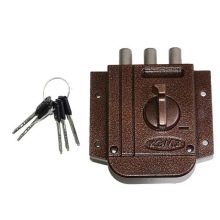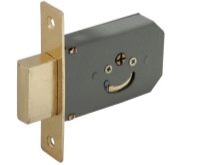What to do if the key in the lock cylinder breaks?

Many are familiar with the situation when the key breaks in the keyhole when trying to open the front door. Quite an unpleasant picture. Most people get lost and terribly upset under these circumstances, especially if they have limited time. Do not panic, because there is always a way out!



Reasons for key breakage

There can be several reasons for the breakage of a product that is stuck in the door, both from the side of the key and from the lock.
- There is an old locking mechanism in the door. Over a long period of operation, it wears out, rust forms inside. This becomes an obstacle to smooth sliding during the opening process.
- Dirt gets into the castle.
- The wrong, too sharp turn of the key in the keyhole was made.
- Key not fully inserted.
- The owner tries to open the door with a non-native product.
- Low-quality material from which the key body is made. For example, aluminum can bend even in a trouser pocket.
- The key is stuck in the door lock, and they are trying to get it out by force using pliers and other tools.
When such a situation occurs, we give little thought to its cause. We need to open the door.
Types of locks
Depending on the installation method, locks are divided into 3 main types.
The padlock more often used to protect utility rooms: warehouses, basements, cellars. For apartment doors, this design is considered primitive.



Since such a mechanism is most often exposed to adverse weather conditions, breaking the key in it is not uncommon.
There are methods to be aware of to open the lock and extract the broken off residue.
- Create vibrations. They knock on the castle body without disturbing the bows. Under the influence of jolts, the debris will begin to move and fall out on its own.
- Lubricate the mechanism with oil. Wait 30 minutes. The oil will help reduce friction, soften rust, and stretch the spring.
- Chemical bath. The structure is placed in a solution of gasoline, kerosene, acetone or vinegar. Coca-Cola is sometimes used. Leave the lock in the liquid for 24 hours. After the expiration of time, the debris will leave the larva without difficulty.
- Warm up the well. You can scald it with boiling water or, if the material allows, use the flame directly.
Overhead locks are installed in interior doors. The probability of breaking the key in them is small.



The third type of locking mechanism is the most common - mortise. It is they who equip the entrance doors, more often from metal. If a key fragment is stuck in such a lock, then it will be possible to pull it out in different ways. It all depends on the complexity of the situation.



A very easy way
If the key breaks in the lock cylinder "successfully", that is, a sufficient part sticks out of the well, it did not have time to turn, then use pliers or tweezers.

First, pour any grease inside the lock. The most popular option is the WD-40. Machine oil, gasoline, liquid silicone, lithol, grease are also suitable. If the listed solutions are not at hand (from neighbors), use ordinary sunflower oil. Add liquid and wait 20 minutes. During this time, the solution will envelop the walls of the locking mechanism from all sides.

It should be noted that it is advisable to do this procedure at the beginning of any method for releasing a key.
After 20 minutes, try to extract the remainder of the key using one of the suggested tools.To do this, grab it, try to pull it out with gentle rotational movements.
One of the easiest methods to free the key fragment is to use super glue. This option is suitable even if the edge of the key sticks out almost flush with the lock. Glue both pieces together according to the instructions included with the glue. Make sure they are fully connected and turn the key. Everyone can use this method. There is one condition - it is effective if the edges of the broken off parts remain even, without burrs.

Common methods
The options described above are not always appropriate and effective. There are more popular methods that are most often used in this situation.
- Use a jigsaw blade. Insert it into the keyhole so that the teeth are turned to the side. Rotate the blade with the teeth up and pull it out sharply. It will pull the key with it.
- You can use a magnet. Pick up the piece from below with a thin needle and try to pull it out with a magnet. Please note that not all of them are capable of magnetizing the key. If you are using a neodymium magnet, it will handle any metal key.
- Take 2 wires, bend one edge of each of them slightly. Place them on the top and bottom of the broken part and try to pull it out. Instead of a wire, a hairpin will do. To do this, divide it in half. You can take a paperclip. This method is used only if the key is not checked.
- Screw a self-tapping screw into the piece. With its help, the key will easily come out of the larva. This method is not suitable for all key designs.
- Tighten the remainder with an awl. When it comes out of the keyhole, grab it with any clamp and pull.


Whichever option you use to remove the key fragment, do not forget that you can pull it when it is in its original position. If it is in an intermediate position, then another solution is needed here.
Cardinal ways
When the key stub cannot be obtained by any of the sparing methods, drastic measures have to be taken.
One of them is the extraction of the larva.
In the cylinder lock, it is located in the cylinder. If it is located in a protruding form, it should be clamped with a gas wrench and rolled up, and the lock should be opened with a flat screwdriver.
If the cylinder is concentrated in the closed position, it is not visible, then first you need to remove the top cover. Then proceed in the same way as in the first case.
There is a method in which the larva is knocked out with a chisel and hammer.
Another option is to cut the lock bolts with a regular hacksaw.
The most barbaric ways are to cut out the entire lock or remove the door from its hinges. Such measures are taken in extreme cases, when everyone else has proved to be ineffective or when it is urgently necessary to get into the apartment. This usually happens if a small child is left at home or a smell of gas or burning comes from the apartment.

Help from outside
If you cannot cope with the problem on your own, invite specialists.

It may be an employee of the Zhek, who is obliged to visit you within an hour after the call. Do not be surprised if he asks you to show your passport where your registration is indicated. This will confirm the fact that he will have to open your apartment, and not someone else's.
If you live in a rented apartment, you should contact the hosts.
Private services, upon arrival at the site, are required to present you with a permit to engage in this type of activity, as well as a contract for the provision of services. For their part, they will ask you to show your passport. Such organizations can also provide you with services to restore the integrity of the lock and doors.
This problem with unlocking the lock can be easily solved with the use of improvised means or with the help of specialists, so it should not lead you into a stupor.
For your part, in order not to become a hostage of circumstances, you should take care of the castle and take preventive measures:
- periodically lubricate the mechanism with silicone grease, which will protect it from corrosion and dust;
- if the lock began to seize, then it is better to change it right away, without waiting for a breakdown;
- open the door only with your own key;
- flush the mechanism with gasoline or kerosene to clean it;
- if you intend to use a duplicate, make it from qualified craftsmen.
These simple guidelines will help you keep the castle in order and avoid incidents.
In the next video, see what to do if the key breaks in the lock.













The comment was sent successfully.